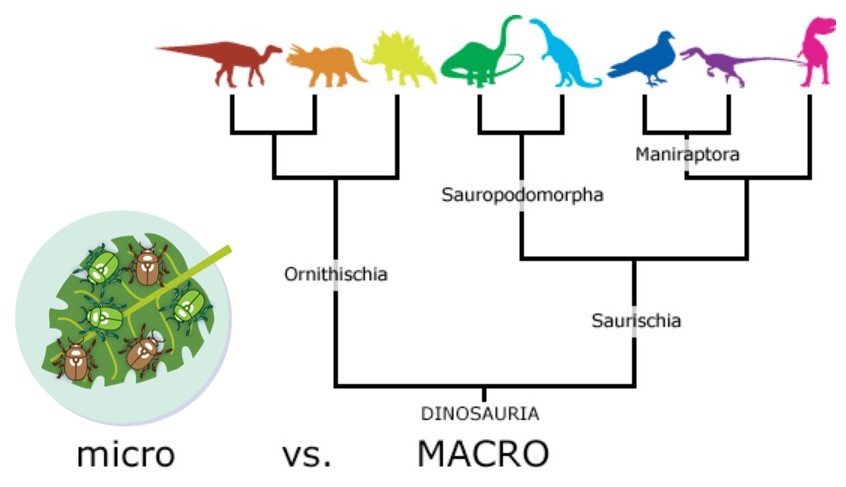by the Understanding Evolution team
Evolution encompasses changes of vastly different scales — from something as insignificant as an increase in the frequency of the gene for dark wings in beetles from one generation to the next, to something as grand as the evolution and radiation of the dinosaur lineage. These two extremes represent classic examples of micro- and macroevolution.
Microevolution happens on a small scale (within a single population), while macroevolution happens on a scale that transcends the boundaries of a single species. Despite their differences, evolution at both of these levels relies on the same, established mechanisms of evolutionary change: mutation, migration, genetic drift, and natural selection.

